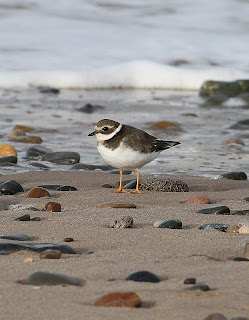So I went for a swim this morning fully expecting to be rained off birding pm. Wrong Heather, it was actually a pleasant afternoon with a balmy southerly wind and just the odd shower that at least kept me looking at the sky to later find my second Swallow of the year. At 1300 hours I hit the Pilling Lane/Lane Ends trail and saw lots of bits and pieces but no Wheatears. At and from the car park/pools I saw 1 Chiffchaff, 10 Meadow Pipit, 1 Reed Bunting, 2 Goldfinch, 2 Greenfinch and a Sparrowhawk again. Water birds came in at 3 Cormorant, 2 Gadwall, 8 Teal, 2 Goldeneye and the trilling Little Grebe that while very vocal, is actually difficult to see as it hides around the well vegetated margins of the west pool with partner and dives at the very hint of being looked at.


Between Lane Ends and Pilling Water I counted 55 Shelduck, 4 Little Egret, 5 Ringed Plover, 130 Redshank and 2 Black-tailed Godwit, with only 250 Pink-footed Goose, a figure that left me wondering where the rest of them were. No worries as I found another 2,400 down at Braides Farm but I didn’t walk the track for fear of disturbing their feed or sending them all prematurely packing out to the marsh. I listened and watched from the gateway for a while but sadly saw only one Lapwing around the newly created but still dry ditches. There are a couple of Lapwings sat on eggs opposite Lane Ends entrance but I’m afraid the overall picture for the poor Lapwing doesn’t look too good again after a promising period a few weeks ago.


It still didn’t rain and the sun came out, the only cue I needed to try out Ridge Farm, walking along the sea wall and back through the farm track. It was quiet, with a few Linnets along the gorse, then fairly late in the afternoon a flight of about 60 Meadow Pipits heading east and a single Swallow, fairly high but heading all the while out over the bay.
I’ll see what tomorrow brings but I bet the weather isn’t as bad as predicted and if that southerly wind is still there overnight, I may find a job for those mealworms. You see, the BBC has got it wrong before and all the trees may not fall over during the night despite the Scottish blizzards I just watched on the news.
Happy Birding.




































































.jpg)













